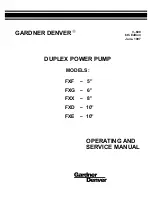
25
HWMC
4
5
All copying, even partial, of this manual is strictly forbidden
RG66008809 - Rev 00
3
WATER AND ELECTRICAL CONNECTIONS
3.2 ELECTRICAL
CONNECTIONS
Warning
the filters associated with the inverter (in order to minimize
emissions and at the same time to ensure that the unit complies with the
EMC Directives) produce earth leakage. This may cause the differential safety
switch to trip It is recommended to install an additional calibratable differential
switch, dedicated to the unit supply line only.
All operations must be performed by qualified service personnel in accordance
with current laws and regulations. For any electrical work on the unit, refer
to the electric diagrams supplied with the unit.
It is recommended to make sure that:
- The characteristics of the mains power supply are adequate for the electrical
inputs specified in the table of electrical data.
Warning
Before carrying out any job on electrical parts, make sure
the power supply is disconnected. Check also that the mains electricity
supply is compatible with the specifications (voltage, number of phases,
frequency) shown on the unit rating plate. The supply voltage may not
undergo fluctuations exceeding ±5% of the rated voltage. The electrical
connections must be made in accordance with the wiring diagram
provided with the unit and the regulations in force.
Warning
Never attempt to modify internal electrical connections:
any undue modifications will immediately invalidate the warranty.
Important!
Upstream from the electrical control panel it is mandatory to
use an omnipolar thermomagnetic circuit breaker complying with IEC-EN
standards (contact gap of at least 3 mm), with an adequate breaking
capacity and differential protection based on the electrical data table
shown below, installed as close as possible to the unit.
For the unit power supply line use H07RN-F- type flexible cables having
the cross sectional area shown in the table.
HWMC
010M 013 018 023 029
Cross-section area of power cables
mm
2
4 6 6 10 10
Safety fuse
F
A
20 25 25 32 32
Main switch
IL
A
20 25 25 40 40
To route the cables use sheaths and conduits suitable for outdoor
installation.
You must provide a switch with a delayed fuse meeting the specifications
indicated in the table.
Important!
Upstream from the electric control board, you must provide a
switch with a delayed fuse meeting the specifications indicated in the table.
To access the electric control board it is necessary to remove the inspection
panel (figure 4) by taking out the screws; introduce the power cable into the
unit through the bushing on the side panel; then bring it to the electric control
board through the cable holder provided.
Important!
Tighten the wires securely to the terminals and clamp the
cable in place with the cable holder (figure 5).
Important!
To maintain the IP protection rating a cable gland compatible
with the diameter of the sheath or power cable must be fit in the hole
on the side panel of the unit.
Important!
Make sure that the length of cable inside the unit enters
the bushing from below: this is necessary to prevent rainwater from
dripping inside the unit.
Important!
An earth connection is mandatory: connect the earthing
wire to the terminal provided on the electric control board (see the
electric control board layout supplied with the unit ), marked
Important!
If you wish to include:
- a remote on/off switch
- a remote switch for changing over
- a remote control
it is a good idea to do so at this stage of the installation procedure, by
connecting the switches or the remote control (accessory) to the electric
control board terminals as directed in section 3.3 and using the unit wiring
diagram as your reference.
















































